|
This week’s #52 Ancestors theme is So many Descendants and I decided to look at the family Robert Carey Harmer and his wife Mary Jenner. Robert Carey Harmer was my Great x4 Grandfather born to Samuel and Phoebe Harmer and baptised on 11 October 1814 in Ashburnham, Sussex. Mary Jenner was baptised on 4 April 1819 in Battle to Samuel and Philadelphia. Robert and Mary were married on 17 September 1838 at Battle, Robert signed the register and Mary left her mark. He was 23 years old and a labourer and she was 19. Robert was living in Ponts Green, a tiny hamlet not far from Ashburnham by the time of the 1841 census. He was a labourer, presumably a farm labourer and they had two children, my Great x3 Grandmother Ellen Augusta who was 2 years old and Frederick who was 1. In September 1840 the tithe apportionments were written down for Ashburnham and Robert rented a cottage and garden at number 368, in the centre of the hamlet of Ponts Green and also rented an allotment number 163 just up the lane. Other of those allotments were also rented by Harmers, a William and a Charles and they were possibly his brothers. They rented the properties from the Earl of Ashburnham. Ellen was the first of 12 children, she was born in 1839 and baptised at Ashburnham on 8 September 1839. I touched on Ellen’s story back in March, in my blog Light a Candle. Her husband was John Fuller and two of their sons worked down the Gypsum mines in Mountfield, Sussex. Ellen was swiftly followed by George Frederick who was born in 1841 and baptised on 22 March 1841 in Ashburnham. He married Mary Elizabeth Saunders in 1871, again in Ashburnham and died in Hastings in 1886. Robert Samuel followed in 1843 and in 1863 married Caroline Holland, in Netherfield, Sussex. In 1844 Mary Jane was born and again baptised in Ashburnham on 1 December 1844, she married John Alfred Crouch in 1865 in Ashburnham. Reuben Esau was born in 1846, baptised on 24 May 1846 in Ashburnham and married Hannah Catt on 20 August 1877 in Ashburnham. He died in 1932 in Newhaven, Sussex. Sarah Ann was born on 1 July 1848, baptised on 13 August 1848 in Ashburnham and married George Foord in 1868 in Netherfield, Sussex. She died in 1902 in Bexhill. Her sister, Harriet Elizabeth was born in 1850 and baptised on 11 August 1850 in Ashburnham. She married Trayton Christmas of Herstmonceux on 27 May 1871 in Ashburnham. The next census was taken in 1851 and the family were still in Ponts Green, unfortunately in such a small place the Enumerator did not write names of houses or roads but I am presuming they are in the same cottage. Robert’s mother Phoebe is a widow and is living with the family, She was an Ag Lab, same as Robert. Children with them were Allen (Ellen) George, Robert, Mary, Rubin, Sarah and Harriot. They had not lost any children to childhood illnesses. I have a sneaking suspicion that is unusual and maybe it was because they lived in the countryside or maybe they were just lucky. The following year in 1852 Rosina was born, she was baptised in Ashburnham on 22 August 1852 and she married William Akehurst in 1869 at Herstmonceux, Sussex. He was from Hellingly, Sussex. Next came Charles William born 1855 and baptised again in Ashburnham on 8 April 1855. He married Martha Morris in 1876 in Ashburnham and died in Cuckfield, Sussex in 1935. Agnes Louisa was born in 1857 in Ashburnham, baptised on 25 October 1857 in Ashburnham and married George Levi Ford from Wartling on 12 October 1878 in Ashburnham. The last son was born in 1859, Arthur James and he was baptised in Ashburnham on 25 October 1859 and he married Charlotte Jane Hills in Ashburnham on 25 August 1883 and died in Winchester, Hampshire in 1940.
The 1861 census shows that Robert was an Ag Lab, his mother had died in the intervening 10 years and both Ellen and George had moved from the family home as had Mary Jane. Reuben and Robert, 15 and 12 were both Ag Labs as well and probably working with their father. Again they were in Ponts Green. There was just one more child to come, Philadelphia born in 1863 and baptised on 10 July 1863 at Ashburnham. Unfortunately she was buried on 12 July 1863, 2 days later. There were no more children born to Robert and Mary. At the time of the 1871 census all the boys who were unmarried and still at home with their father were Ag Labs, again in Ponts Green. The 1881 census tells the same story. Charles William by this time with his wife, Martha were living at Ashburnham in a cottage at the Parsonage. He was described as a gardener. Robert died in 1887 and was buried on 26 October 1887 at Penhurst, another closeby village. He left Mary, a widow who by the time of the 1891 census was living in the Alms Houses in Ashburnham. She had a granddaughter living with her, Ann Ford who was 17 and must have been a great help to her widowed grandmother. Mary died in 1896 and was also buried at Penhurst along with her husband, I’ve not found a grave there. I have a feeling that it is unusual to find a family with so many children where all but one made it to adulthood and mostly died in old age. My next task is to find any descendants of them through my DNA matches and see how far they moved from Sussex if at all.
0 Comments
Elizabeth Leury was my Great x4 Great Aunt, she was born in 1790 in Slaugham, Sussex just two years after Jane who was my Great x 4 Grandmother. She had two brothers, John the eldest and James and 4 other sisters; Sarah, Phebe who died at eighteen months, Lydia and another Phoebe. Their parents were John and Sarah Leury. It is Elizabeth’s husband William Juniper who is the subject of this week’s blog. I am following the subject of this week’s #52Ancestors – Should have a been a Movie very loosely, it’s more a serial drama or a soap, think my favourite soap, Emmerdale and the saga of farming families. Elizabeth and William were married on 8 December 1808 at the Parish Church in Cuckfield, Sussex. According to the census records I found they had at least 5 children; William, Owen, Ellen, Edward and Susan. I have not researched their baptisms as yet so this is not confirmed. By the time of 1841 census, the first we can get copies of, William was 52 and Elizabeth was 50. He was reported as a farmer at North Hall which is between Staplefield and Cuckfield. For ancestors born before civil registration began in 1837 it is very hard to find much information about them and you have to think creatively so I did and I thought maps. My first port of call was the Tithe maps that are available on The Genealogist For a history and explanation of Tithe maps visit History | Tithe Maps I discovered that William Juniper was farming quite a substantial farm at North Hall, he rented fields, meads (meadows), woods, buildings, yards and gardens from Thomas Ellman who was said to be a cousin of John Ellman who first bred the Southdown sheep and is reported to have experimented with the breeding of Sussex Red Cattle. The 1851 census tells us that William was farming 100 acres. In 1861 it was 130 acres. The tithe maps not only show the farm and the fields around it that were part of the farm, it also allows us to see who the neighbours were. Looking at both the Tithe maps and the census records there were Abram Juniper near to North Hall, John Juniper next door at North Hall, I have not researched these two yet but they are likely to be sons of William and the two executors of his will in 1875 are John and Abraham, sons. James Johnson rented a cottage and garden next door, he married Jane Leury, Elizabeth’s sister and was my Great x 4 Grandfather. James was an Ag Lab and maybe worked on the farm for William. There was Amos Juniper on the 1841 census closeby also a son of William, and Stephen Leury. There are a number of younger Junipers, Johnsons and Leurys dotted around, who could be grandchildren, nieces and nephews and other relatives.
And just to add to the sense of the story being a soap opera, whilst trawling through the Cuckfield baptisms register I discovered the following: 17 January 1808, Mary baseborn daughter of Jenny Leury, reputed by William Juniper Jenny is I guess, Jane the older sister of Elizabeth who eventually married William. A true soap opera story, Elizabeth married her older sister’s ex! From just one record I am able to start to build a picture of the life of William Juniper and his family. I will add to this story by searching for a copy of his will, looking for deeds and other records at The National Archives and checking local newspapers. Despite no civil registration and census records in the early 19th century and before there are records that can be searched for about ancestors. Solitude is the theme this week for #52Ancestors and I thought I would look at my tree to see if I could find any sole surviving children. The first one I came to has an interesting story to tell. Nephi Vincent was born in 1867 in Salt Lake City, USA. He was the sole surviving child of my Great x 3 great uncle, Jesse Vincent and his second wife Ellen Holt. Jesse was born in Cuckfield in Sussex, 1830 and he married Sarah Nicholas 1852 in Cuckfield. They moved to Battersea and then Chelsea in London where they had four children; Naomi born 1852, Brigham born 1858, Jemima born 1859 and Sarah born late 1861, she died and was buried at 11 weeks old in March 1862 and it looks like Jesse’s wife Sarah died shortly after. I’ve ordered the death certificates to find out what they both died from. Jesse and his three remaining children emigrated to Salt Lake City in 1863 arriving at Castle Garden, New York on 20 July 1863. According to his naturalisation record he made the application to become a citizen of the USA on 4 January 1862 and reading between the lines his intention was always to go to Salt Lake City. I presume he belonged to a Mormon Temple in London which may explain why he was in London, the fact he had a son called Brigham, an unusual name in England is a clue. Plus not an original record but there is also a record in Utah, U.S., Mormon Pioneer Overland Travel Records, 1847-1868 records on Ancestry stating he arrived in Salt Lake City and returned from there in 1847 at the age of 17. His birth date and death date on this record match. That needs checking out further to see if I can find the original record. In 1865 he married Ellen Holt and together they had three children, Robert born 1864 but only lived for 7 months, Ellen born 1865 and died in 1866 and Nephi who born in 1867 by which time Jesse had become a citizen of the USA. There don’t appear to be anymore children born to this couple. This all needs further investigation because at least 1 child was born before they married in 1865. Nephi married Sarah Jane Stocking in 1885 and together they had 9 children and they and his parents remained in Salt Lake City.
A contact back in 2015 sent me the photos that accompany this blog and some story about the family. But it is only now that I am researching them a bit more thoroughly. Some family trees have added another marriage to Jesse which I have not found before, unfortunately as is so often the case, there are no sources so I have no idea if this is real or not. It was said to have been in 1881, but Ellen didn’t die until 1911 after Jesse. However the Mormons were known to take more than one wife so it is a possibility I need to research. Her name was Harriet. All three of his wives were said to have been born in England suggesting they were all converts to the Mormon religion. This is proving to be an interesting family that requires more research. The theme for #52Ancestors this week is Light a Candle and I thought I would tell you about one of the surviving industries of East Sussex and my forebears who were involved in it. For anyone who has been anywhere near the area of Mountfield in Sussex, may have seen some odd sights in the countryside, such as a covered conveyor belt cutting through Darwell woods, from Mountfield to Brightling. When I was a child, I have a memory of my Grandad standing with me and my sister on a bridge and watching the overhead cableway going into the ground and coming back out with its buckets full of gypsum. This system was used until it was replaced with the covered conveyor belt which must have been in the 70s or 80s. Gypsum is a soft white or grey mineral consisting of hydrated calcium sulphate. It occurs chiefly in sedimentary deposits and is used to make plaster of Paris and fertilizers, and in the building industry. The Mountfield website The Gypsum Mine – Mountfield Parish Website tells me that Gypsum was first discovered at Mountfield in 1872, a chance find as they were actually boring for coal. Various of my Harmer forebears have in their time worked at the Gypsum mines, my dad remembers visiting an Uncle who lived at Netherfield where he describes a footpath that wound its way down from the village to the mines lit by gas lights especially for the workers to see their way to work. Two were sons of my Great x 3 Grandmother, Ellen Augusta Harmer. She married John Fuller in Brightling on 16 February 1866, after having had two children whose father was unknown. One of those two was James Frederick Samuel Harmer, my Great x2 Grandfather. But back to Ellen. She and John had 6 children; Philadelphia, George, Robert, Mary, Charles and Rachel and the two sons, the subject of this blog are Robert and Charles. John died in 1886 and Ellen had her three youngest children living with her on the 1891 census; Robert, Charles and Annie (Rachel Ann). Robert and Charles were both described as Stone digger and I presume they were working for the Gypsum mines. They were living at Darwell Hill which is at Netherfield and close to the Mountfield end of the mines. Both boys married during the next decade; Robert to Naomi Smith in 1893 and on the marriage certificate he is described as a labourer and Charles to Naomi Luck in 1899 and again Charles is also a labourer. They were all living in Netherfield. On the 1901 census Robert and Naomi were living on Darwell Hill with his father in law, William Smith, a widower and his mother, Ellen, a widow along with two children. Robert was a General Labourer. Charles was living in Mountfield at what looks like Mineshaft with his wife Naomi and he was a Gypsum Miner as were many of his neighbours around him. By 1911 Robert was also living on Darwell Hill and was a Gypsum Miner Worker, he had 3 children now. Charles had by this time moved to Hoath Hill, Mountfield and was a Gypsum Miner, he was living with his wife and her father, mother and sister. In 1921 Robert was working at a Stone Quarry and was an employer so presumably not at the Gypsum mines but maybe connected. He was living with his wife and nephew Charlie who was 15 and was his kettle boy. They were living at Ivylands Green near Netherfield. Charles was described as a Gas Engine Driver above ground at the Gypsum Mines at Mountfield, described as plaster and cement makers. He and his wife had a 12 year old niece living with them and remained at 4 Hoath Hill, Mountfield. I am sure that as I continue to research the Fullers and the Harmers I will uncover more workers at the Gypsum Mines, there is the uncle of my Dad, for instance who lived in Netherfield. The mines apparently have another 20 odd years of mining left so will continue to draw employees, no doubt from the local area. Oh and the theme Light a Candle, well I guess right back at the beginning of mining the men would have worked by candle light rather than the electric lights they probably now use.
This week’s theme for #52Ancestors is Membership and this is a very tenuous link but bear with me dear reader! I thought I would write about some research I have been updating recently on my tree which takes us right back to week 2 of #52Ancestors last year where I wrote about my favourite find, which was the birth certificate of Helena Lorraine, my Great x 2 Grandmother. This time I have been looking closely at her mother, Emily Stanford. I was told years ago that her parents were Isaac and Mary Stanford of Roughey Corner near Horsham which fits as a birth place from the full census entries I have for her and I happily accepted that for her. She was born in 1834. However a couple of years ago when I was searching for the children, I found a census return for 1871 which was 6 years after Isaac had died where Emily Standford born 1834 was in the workhouse at Horsham. I thought at the time this was odd, as we have two census records for Emily in 1871, in Punnetts Town along with John Smith and the children. At the time I left it but I went back to it last weekend. I then noticed that the box at the end of the census return, you know, the one we always ignore had writing in it, Emily was dumb from birth and was classed as an idiot. I went back and looked at the other census returns and found that the 1861 census where she was with Isaac also had deaf and dumb. None of the later census returns for my Emily have that on it. Therefore I concluded that Emily born to Isaac and Mary is not my Emily. I have detached them from the tree. I went back to the beginning and looked at what I know of Emily, she was born about 1833 in Horsham, Sussex. Despite the fact that she lived with John around different parts of East Sussex the census returns from 1871 to 1921 are all adamant she was born in Horsham, apart from the 1881 which curiously has her born in Holborn, Middlesex. But I wonder whether the enumerator misheard a thick Sussex accent? I searched again for Emily, born 1833 in Horsham and came up with two alternatives to the original one.
Emma Jane Stanford baptised 2 March 1834 to John and Jane at Horsham Independent. John was a Linen Draper. My instincts tell me this is not the correct one. Amy Stanford baptised 7 July 1832 in Horsham to Ann Stanford. I found an 1841 census record which fits this one. Amy was 9 years old and living on her own in West Street, Horsham. I have not been able to trace anything more of Amy or indeed Ann. I have a feeling this one needs to be followed up. The 1911 census has her living with one of her children at Boreham Street, age 78 and she is recorded as Amy Stanford Lovekin. I still do not know where the Lovekins fit in. I need to research further the Rawlins name that she uses on some of the birth certificates for her children. Following the births of the children I have found so far, I think her first child was William Rawlins born 1865 and registered in Wartling. Then she had Helena Lorraine Vineall in 1867 in Battle. Then I think she met John Smith and had their first child Flora in 1870 in Warbleton and she is recorded as Emily formerly Rawlins. This is what she is recorded as for the next child, Jessie born 1872 in Wartling and lastly Thomas is born 1877 in Mayfield and Emily was recorded as Emily Smith formerly Stanford. The four older children, Emily 1853, George 1856, Mary Ann 1860 and Edith Bertha 1863 I am still looking for births for but again they use the Lovekin name for their fathers. I had thought previously these were John’s children with another woman, as Emily was apparently in Horsham with her family. Now that is not true they could well be Emily’s too. This family continues to baffle me and I’m even further from finding the truth now apparently. I think I am firmly in the membership of the ‘Haha you are not going to find us’ Club. This week’s #52Ancestors theme is Lucky and again I was really stumped with this one. I don’t feel I have gained much of my family tree through luck but through sheer hard work most of the time. But there was a lucky find I had a couple of months ago which is yet to come to fruition. Back in January I told the story of James Traies my Great x5 Grandfather who apparently had five wives. I mentioned that he was born in Exeter in Devon and the family line traced back ends up in the 1600s in Crediton in Devon. I descend from John Traies baptised in Crediton in 1696 who married Sarah Pidlar in 1724 in Crediton, Devon. This John was the son of John Trease and Lidia Kerswill who married in 1681 in Crediton and that was where my research petered out. I pulled my notes out back in the winter and decided to revisit a website created by a contact I met on Rootschat, a genealogy forum online some 15 years ago or so. He has a very comprehensive website at http://www.trease.org.uk/ where he explains why he believes that my particular line of Traies were part of the Trease line. It is the belief that this John was the son of Samuell Trease who married Rebeccah Prise in Crediton and it is believed that Samuell Trease and his brother, Richard left the Launceston area of Cornwall and settled in Crediton. So far, conclusive evidence that these TRAIES families are related to persons on the main TREASE family tree is lacking. However the circumstantial evidence from continuity of Christian names and similarity of the surnames plus the disappearance of some 'Treases' with those Christian names from North Petherwin (then in Devon, now in Cornwall) and the appearance of similarly named 'Trease/later Traies' in Crediton, Devon together with associations with the Wivell family from Launceston are thought to indicate that such a link is likely. To date, however, it remains unproven. Genealogists know well that names can be changed and misspelt along the way. Where a vicar was writing down the details of a couple marrying and they could not write and had never seen their name written before it was easy for Traies to become Trays or even Trease. Samuel was thought to be the youngest son of Michael Trease who lived in North Petherwin which was part of Devon but is now in Cornwall. It is thought Samuel went to Crediton, Devon with his brother Richard, married Rebecca Prise in 1654 and had children (ie John) who settled in that area and that he himself may have died in 1690. I started to read what the website said about Michael Trease and look for some of the documents mentioned;
“Michael's parents and his date of birth are unknown. It is surmised that he may have been the son of William Trease of North Petherwin whose will was proved in 1597 and the brother of Dorothy Trease who married Degory Doubt in North Petherwin late in 1611. If he was William's son, he would probably have been a minor when his father died and others, possibly relatives from either his mother's or father's side, would have looked after him, Dorothy, and Pattacott farm.” At this point, I stopped, why did Pattacott Farm ring a bell with me? I don’t have family from that area and so I went to look on a map and couldn’t quite believe it as I realised that two of my other half’s oldest friends moved to Cornwall a couple of years ago and they bought a property on Pattacott Farm. Of course I messaged my friend to tell her to which she replied “You are JOKING!!!!!????? and apparently the current owner is a descendant of the Trease family who farmed there. At some point this year we are going to make our first visit down there to see them and I can’t wait to not only stand on the ground my ancestors maybe once farmed but see what I can find out about them and maybe even meet a very very distant cousin. It would feel even luckier to find that elusive final bit of proof that slot into place and prove the theories. The theme for #52 Ancestors this week is Translation so I thought I would tell you about a document I am attempting to translate from French to English at the moment and what is being revealed as I type into the translator. My school girl French is very rusty, I can pick out the odd word but not enough to translate a 4 page document, the remontrance of Reverend Louis Michel. I mentioned Louis Michel back in September, I had been researching his son, also Louis who was my great x5 grandfather and I had finally found his baptism in 1782 in St Brelade in Jersey, despite several researchers thinking he was from Rouen in France. His father, Louis Michel was a Reverend and was appointed Perpetual Curate at St Brelade on 24 December 1781 and his signature as ‘Ministre Officiant’ appears on various Jersey, Church of England Registers for Baptisms, Marriages and Burials during the period 17 May 1782 to 16 December 1787. So far I have not found Louis snr’s birth but I have his marriage to Elizabeth Tiquet in August 1780 in Holborn, London. She was twice widowed, her first marriage of Abraham Levesque, a Huguenot. I also have found Louis and Elizabeth’s deaths in Bethnal Green, Elizabeth’s in 1799 and Louis’s in 1801, meaning Louis jnr was not very old when he was orphaned. The document I am translating was delivered to the Royal Court on 25 November 1793. That is the Royal Court of Jersey and I am presuming it reveals why he left Jersey and ended up in Bethnal Green not many years later. Google is not very good at translation I find, it does not seem to be able to cope with late 18th century words and puts Remontrance as Remonstrance all the way through but I think a better word would be admonition. Correct me if I am wrong please! He goes on to explain he had lived on Jersey for 15 years, having been invited by the founders of the chapel in St Aubin, to come from England (where he had already been for several years and preached the word of God as minister) to serve the said chapel; that as a result he served it for well eleven years, & part of this same he also served the parish church of St Brelade and had the enjoyment of the income of the benefit of this parish by the cession of the Rector.
It appears in the year 1790 he took on the parish of St Martin too and was given a dwelling that was not fit for habitation for a Minister of the Gospel and his family, (presumably Elizabeth and Louis were living there too). In 1791 he wanted the dwelling repaired and it was the right of a Minister to make repairs using debris from repairs to the Church and he had taken some old pews removed and replaced from the Church by one of the parishioners to use the wood. It was a custom and he also had the permission of the parishioner. That is as far as I have got at the moment but I assume he had been accused of theft by someone, maybe the Rector who didn’t sound a particularly honest man. I am looking forward to revealing more of the story as I continue the translation and maybe if I remember I will update you when it is finished and I know the full story. I was led to the document by a contact also descended from Louis and who found it in the catalogue of the Jersey Archives. It always amazes me just what nuggets you can find about your ancestors if you are prepared to look. This one certainly is a gem! The theme this week for #52Ancestors is Gone too soon and I decided to write about Mary Rusbridge my 2x great grandmother who died after giving birth at the age of 28. I have many occurrences on my tree of young women dying early in childbirth and much has been written about the reasons why families in the Victorian period had big families and young women died so often in childbirth which I will not repeat here but I will retell Mary’s story as a testament to those young women so that they won’t be forgotten. Mary was born on 21 October 1854 in Godstone in Surrey to John Rusbridge and his wife, Ann formerly Roffey. She had seven younger siblings, Ann born 1859, Emily born 1862, John born 1865, William born 1866, Thomas born 1869, Robert born 1872 and Edith born 1875. The family lived at Blindley Heath where on the 19 November 1854, Mary was baptised. The family appear on the 1861 census at Hollands Farm in Godstone, John was a Farm Carter and Mary was a scholar. Ann was 2 years old. Lodging with the family was James Payne aged 52, a Bricklayer’s labourer and William Quickenden aged 25, a Carpenter’s apprentice. The Payne family later became connected through the marriage of Mary’s son Albert and Emily Payne, my great grandmother. I believe that the families all knew each other because they belonged to a non conformist chapel but that has not been proved. By the time of the 1871 census Mary had left home and was a servant at High Trees, in Reigate. She was a kitchenmaid. I have yet to investigate High Trees. She married William Andrew Terry on 21 October 1879 at Blindley Heath. His father was Thomas Terry, a labourer, probably agricultural. The two witnesses to the marriage were Thomas Terry, possibly William’s father and Ruth Roffey, probably a relative of her mothers. In 1881, she was at Old Park Farm Cottage, Bletchingley with William who was an Agricultural Labourer and Albert John, my great grandfather was 11 months old. Also living with the family were William Rusbridge aged 14 and William Roffey aged 17. Both were agricultural labourers. William Rusbridge was one of her younger brothers and William Roffey could well be a cousin.
On the 30 March 1883 Mary gave birth to a daughter, Ethel Mary at Anchor Field Cottages in Godstone and unfortunately by 4 April she had died from a Phlegmasia dolens thrombosis, better known as a deep vein thrombosis today. The risk of DVT can be increased during pregnancy but today mothers to be are checked if likely to be at risk and measures can be put in place to mitigate against it. Sadly for Mary in 1883 this was not the case. The witness to both the birth of Ethel and the death of her mother was M Winchester who on the death certificate was described as Aunt. At the moment I am not sure who she was. Mary was buried at Blindley Heath on 7 April 1883. Poor William was left with two young children but as was quite common in those days, he married again in April 1885 to Edith Knight and they had 11 children. Albert became the Postmaster at Lingfield. I have not managed to find any information after her birth about Ethel Mary yet. The theme for #52Ancestors this week is Education and I thought I would tell you about the links I have with Punnetts Town Community Primary School in East Sussex. Punnetts Town is the village where my brother and his family and my sister and her family live, my mum grew up and my grandparents and great grandparents lived. The school opened in May 1879 and at least 4 generations of my family have attended through the decades. The latest two are my two youngest nephews. During the 1940s to the 1960s one of the teachers and then Headmistress was Mrs Eva Pilbeam, my great Aunt, she was married to Sydney Pilbeam, my maternal grandad’s older brother. I don’t know the exact dates of when she was at the school but past pupils put her time there between the 1940s and late 1960s. She was a well liked teacher and Headmistress from the early 50s it is believed, so much so, they had a memorial bench erected in her memory. I believe the bench was put into place when one of my nieces was at school there. My mum remembers her as a strict but fair teacher who used to walk everyday from Rushford Farm in Three Cups to the school, which is the other end of Punnetts Town village and presumably walk home again at the end of the day. Not a huge distance but very different from these days where there is a scrum of cars outside the school twice a day, because nobody walks anywhere anymore. She taught more than one generation of children from Punnetts Town and attended a school reunion held on 11 May 1985 at the school along with a number of past pupils who had been at the school between 1928 and 1940. I was sent a picture of her cutting the celebration cake along with other past teachers. I put a call out on a Facebook group for memories of her and these are some of the comments I received back:
“She was there when I left 1967, she was a very good head although we might not have always appreciated it.” “I was there from 1953 to 1959 and Mrs Pilbeam was the main teacher. Mrs Hewitt was the secretary and Mrs Smart was also a teacher. I loved my time there!” “My 2 boys Malcolm and Steven had Mrs Pilbeam as head teacher till Miss Banner took over when Mrs Pilbeam retired, when she was older, I went to her as a home carer. She was so lovely. Mr Pilbeam gave me a big bunch of lilac from the tree by the gate. The scent was wonderful. She also taught my boys in the Rest Chapel Sunday school. So she was part of our life so much when my boys were young. Precious memories.” Precious indeed. I think I have a memory of her teaching me in Sunday School on one of the many occasions that I stayed with my grandparents during school holidays and went to the Rest Chapel on a Sunday. I didn’t meet her often during my life but I remember her as a quite short, but very sweet old lady with a broad smile. I also have a memory of a school trip to the farm when I was about 8 years old and she showed us around the farm house, including a look at the wattle and daub on the stairs. That has stuck in my mind for years. “Mrs Pilbeam’s grandson Andrew was the same age as my Steve. Andrew had to wear glasses. Mrs Pilbeam was highly amused when my gentle little Steve said to him ‘if the big boys laugh I will punch them up’, he was certainly not a fighter but Mrs Pilbeam often told me that little tale.” “Mrs Pilbeam was Headmistress during my time at PT School 1952-58. I think she must have been made Head after Mr Booth moved to Maynards Green which was in the late 1940's! I enjoyed my time there and I remember Mrs Pilbeam reading last period on a Friday "The Travels of Marco Polo". It fired my imagination for travel and over the years have travelled parts of the Silk Route, mainly in Uzbekistan and Pakistan! The Court of Kubla Khan conjures up exotic locations!” I love that last comment, how many of us can say we were inspired by a school teacher? Village schools are an important part of a community and can be important to some of the families within the community. Punnetts Town School is important to our family that has lived in Punnetts Town for some generations and as some of my blogs have proved to me, some members of my Pilbeam family have been important members of the community in their day. Long may that continue and long may the school continue! Lastly I would just like to say a big thank you to everyone who shared photos and comments on facebook. As a genealogist I feel it very important to keep the history of our families, and the places they lived in, alive by documenting our memories. Thank you! This week’s theme for #52 Ancestors is Overlooked. My subject this week is one that those of you who are researching your own family history may understand. Do you have a part of your family tree research that isn’t as well researched by yourself as other parts of the tree? I have! My Baldwin side of the family has been sorely under researched. There are various reasons why we might favour a certain part of our tree, it may be more contacts, it’s easier to find ancestors, or perhaps we prefer them. For me the Baldwins have proved more difficult, I can find very few people who are also researching this part of my family tree. My DNA results back this up, so far I have found no matches with my Baldwin part of the family. The Pilbeam side are extremely well represented. The Pilbeams were also based in Sussex, I know the area, the records offices are close by and there are loads of sources of Sussex records online. The Baldwins, came from Hackney and other parts of London and Middlesex, an area I don’t know at all and records have been more difficult to find. Also the fact that Corles Baldwin, my Great x 4 Grandfather came from Ireland which is much more difficult to research is a large brickwall to my research. However that is not to say that the Baldwin family are not interesting. They are! Much better travelled than the Pilbeams and coming from the City of London as they did, into which people moved from all parts of the country, the families that married into the Baldwins come from Devon, Norfolk, Ireland and Lincolnshire. Part of the Industrial Revolution of the 19th Century when poor agricultural families moved to cities for the chance of a better life. Although sadly the parts my family were found in, I’m not sure they found a better or more prosperous life! I have only found one family so far, the Turners who were in London in the 18th century, living and working not far from the tower of London. My Baldwins were dockers working on the River Thames, working with tea and sugar and I need to learn more about where and how and what this involved. During 2023 I would like to spend more time on the Baldwins. Meeting Dad’s cousin for the first time has spurred me on to find out more information to share with her, the family she never knew she had. Particularly the 20th century Baldwins, another area of research I often overlook, preferring to look further back in time. Sometimes this is easier than 20th century research which is often hampered by lack of resources because of records being closed for up to 100 years like the census. Thrulines on my Ancestry DNA results is interesting, they come up with potential ancestors based on the research where available for your matches, the couple of Baldwin matches I have, suggest a mother for Corles Baldwin, I don’t know how correct it is but it is definitely worth checking out.
I will also continue to search the British Newspaper Archive for useful and interesting articles that mention my Baldwins like the one I related a few weeks ago about my Dad’s uncle, William who died in an accident at Green Brothers Factory in Hailsham in 1950. It is amazing what nuggets of information about our ancestors lives can be found from newspapers. Next week’s blog I am writing about the research I have carried out on Thomas, eldest son of Corles and Hester whose family didn’t stay in England but travelled the Atlantic and settled in Canada. I have found at least one of his grandsons who has his name on the Menin Gate memorial in Ypres. But more of that next week. |
AuthorKerry Baldwin Archives
June 2023
Categories |
|
Copyright Kerry Baldwin 2024
|
Proudly powered by Weebly
|
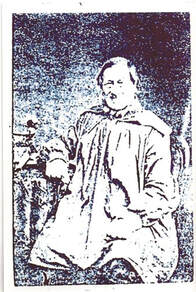
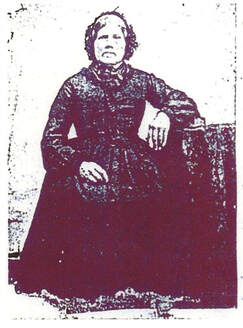
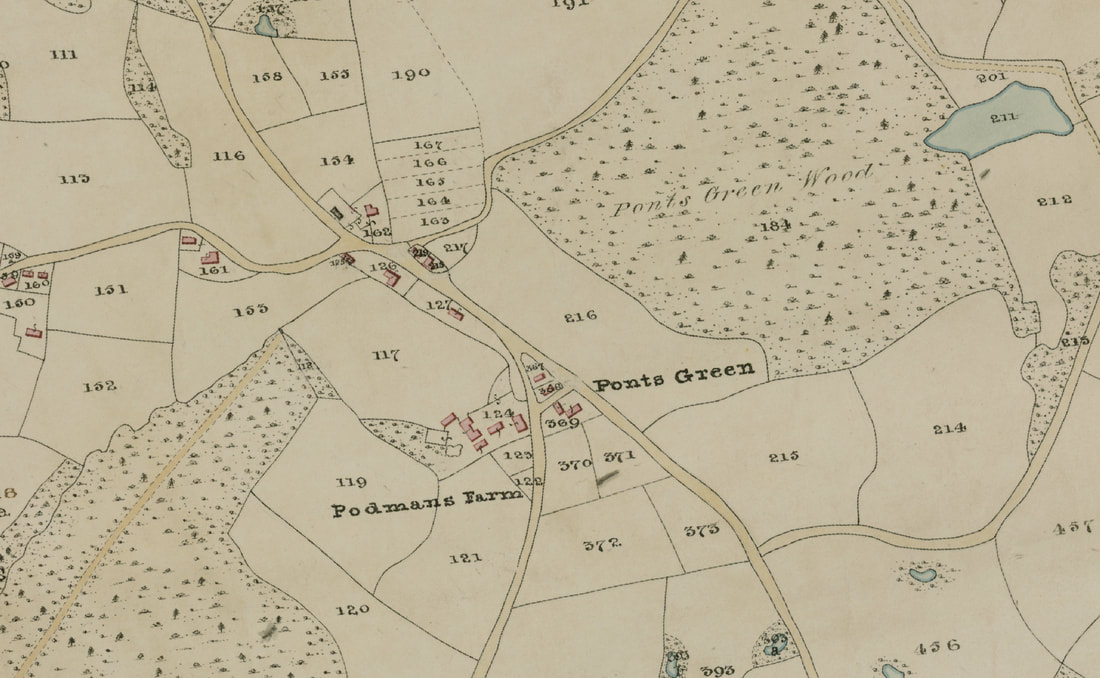
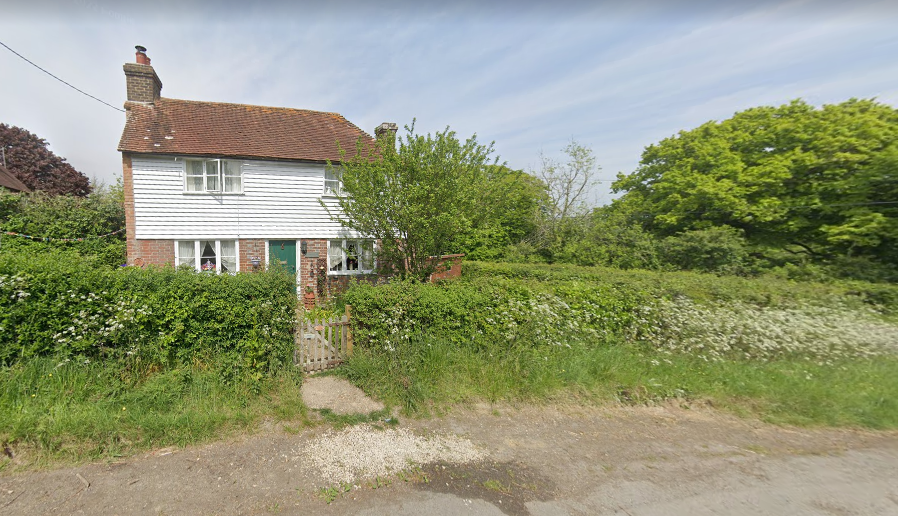
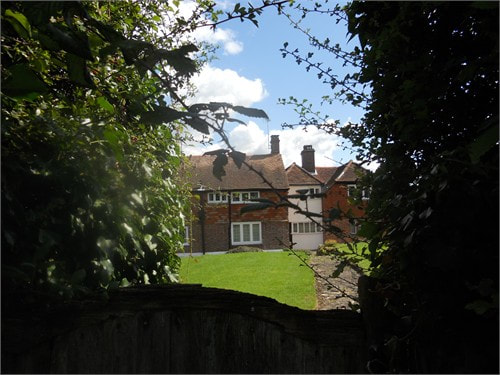
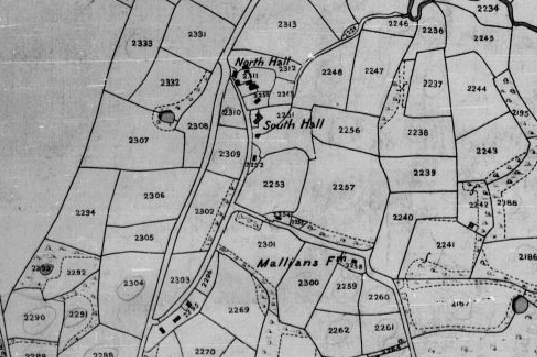
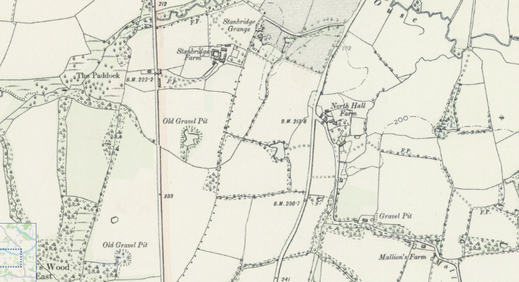
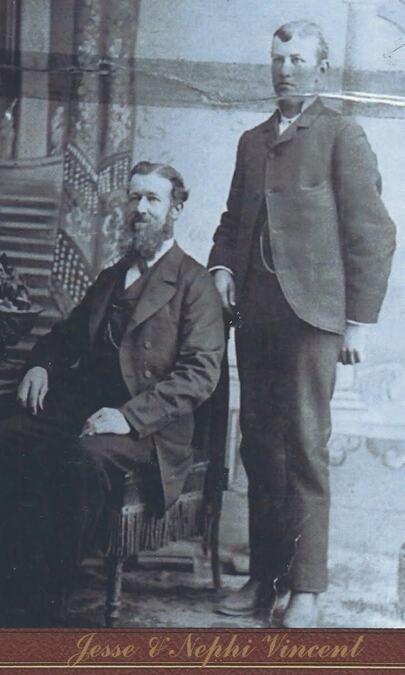

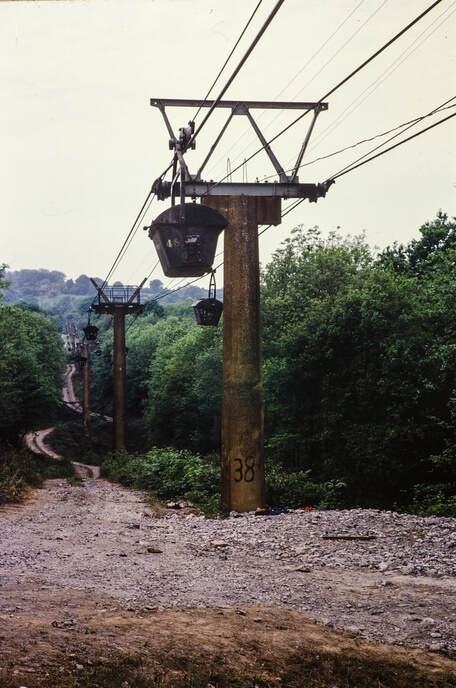
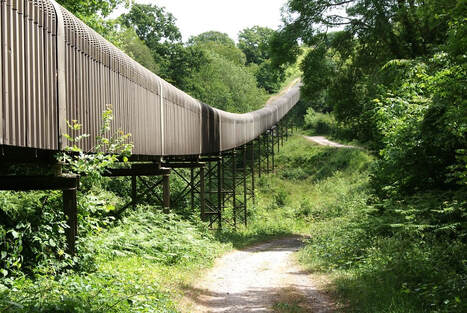
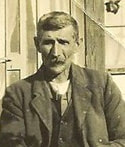
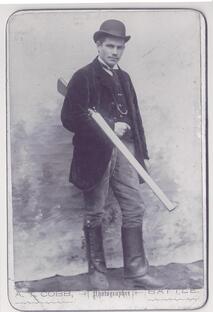
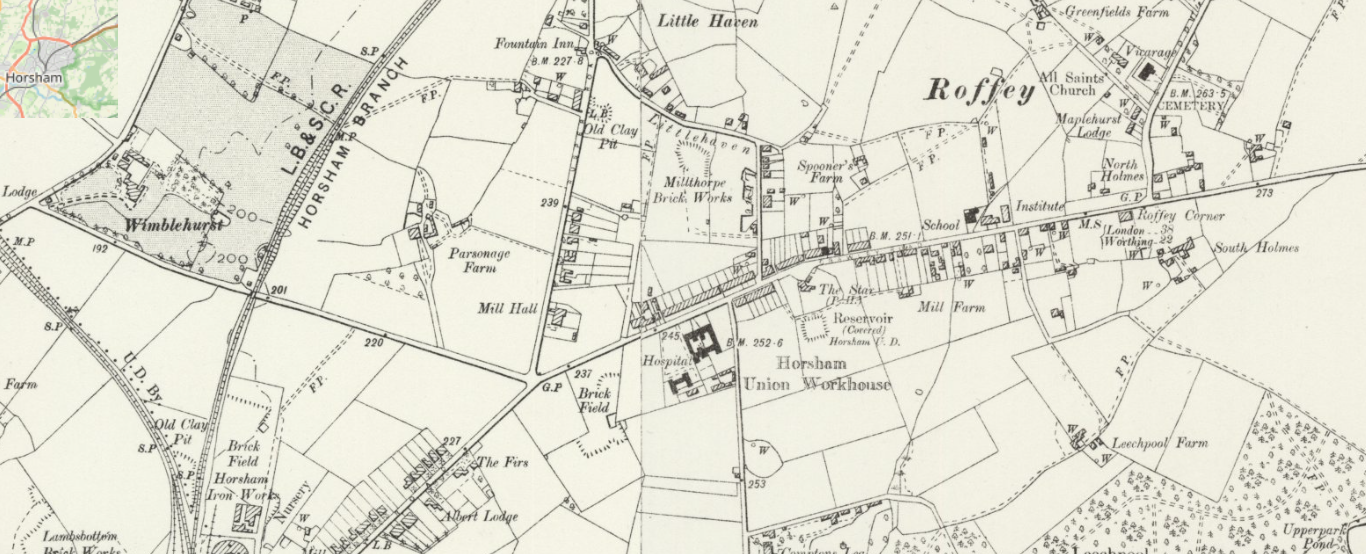
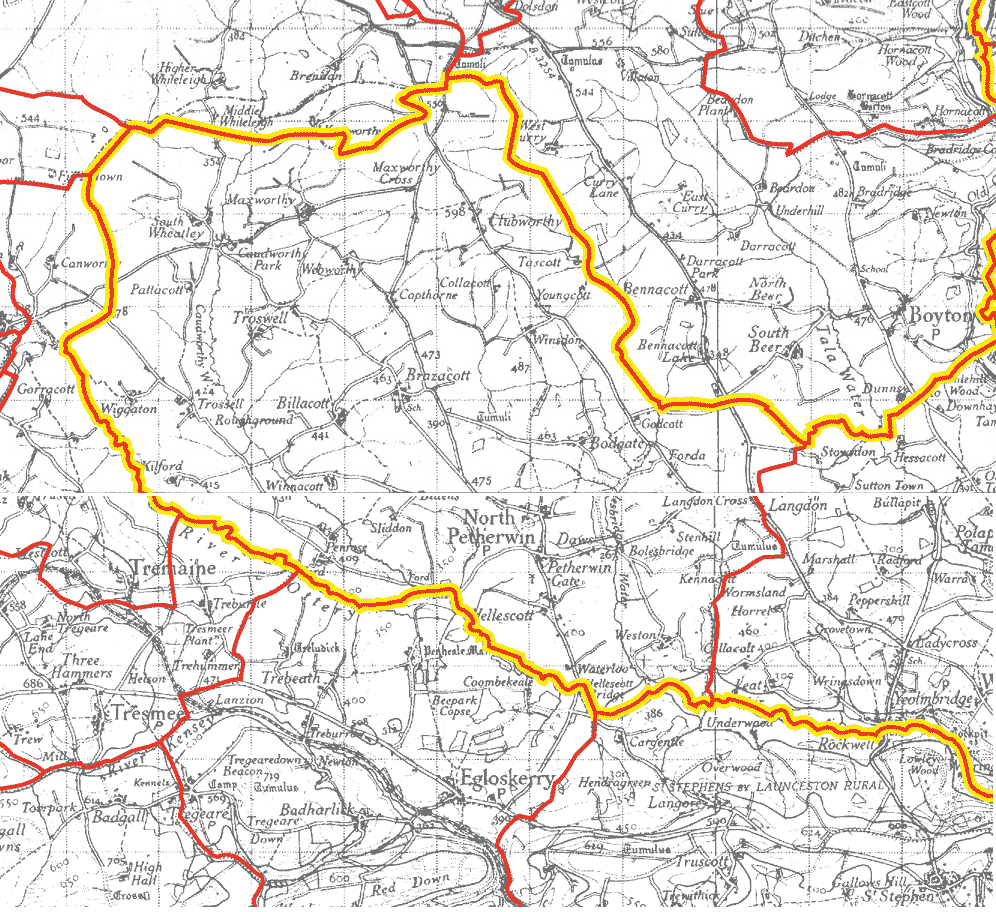

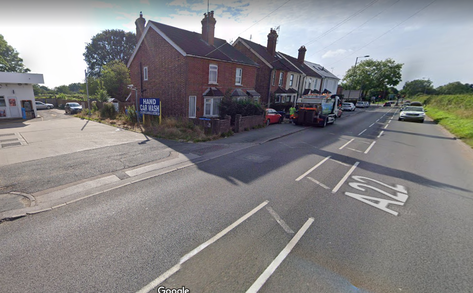

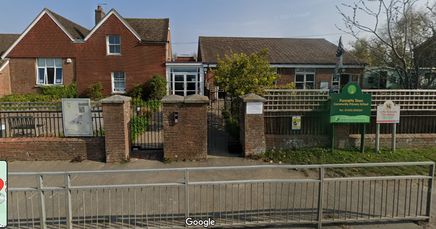
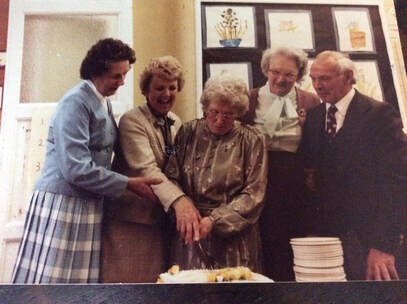
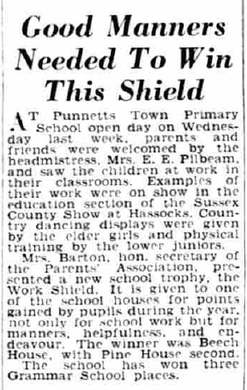
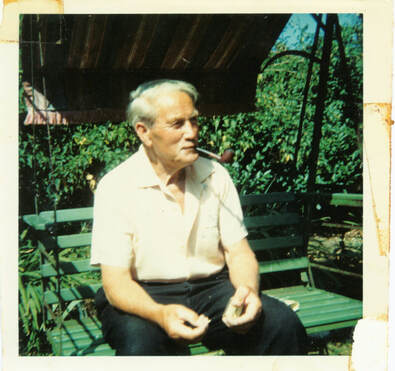
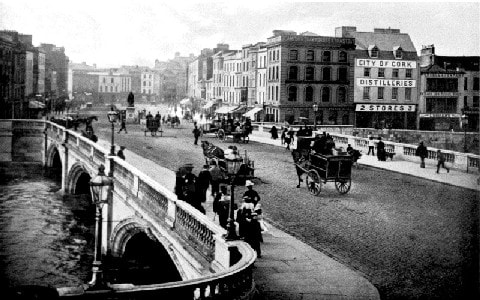
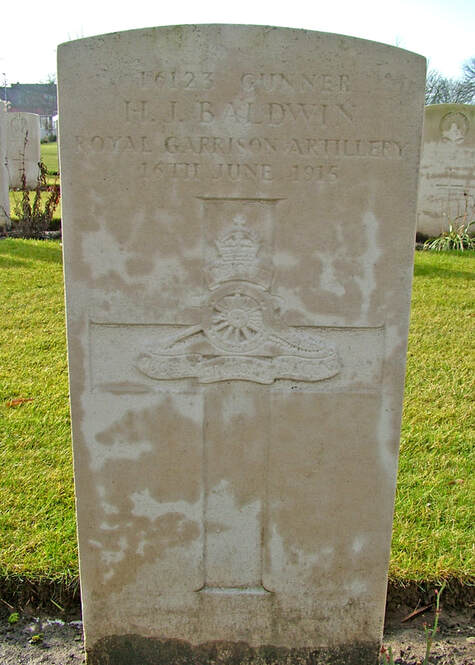
 RSS Feed
RSS Feed
